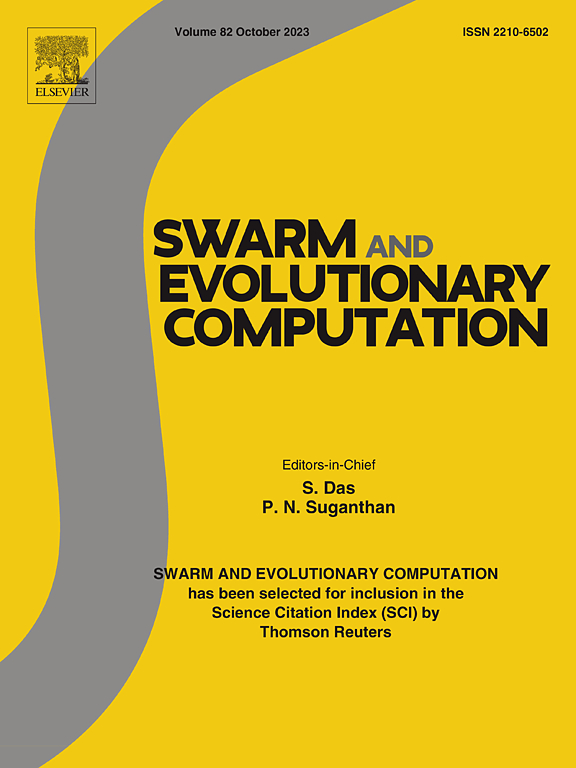Multi-objective optimal power flow problem using constrained dynamic multitasking multi-objective optimization algorithm
IF 8.2
1区 计算机科学
Q1 COMPUTER SCIENCE, ARTIFICIAL INTELLIGENCE
引用次数: 0
Abstract
The multi-objective optimal power flow (MOOPF) problem involves conflicting objectives and complex constraints, presenting a significant challenge for existing optimization methods. To address constrained multi-objective optimization problems (CMOPs), a recent evolutionary multi-tasking (EMT) framework has been proposed, involving a primary task and several auxiliary tasks running in parallel. The design of these auxiliary tasks is critical for supporting the solution of the primary task. This paper introduces a novel constrained dynamic multitasking multi-objective optimization algorithm (CDMTMO) to solve CMOPs. The proposed algorithm comprises three populations, each assigned a specific task: the first population focuses on solving the primary CMOP, the second population tackles a constraint-relaxed problem, and the third population gradually transitions from solving an unconstrained problem to the CMOP. To ensure effective collaboration among auxiliary tasks and the main task, CDMTMO incorporates an improved ε-constrained method and an enhanced dual ranking method. Furthermore, a pre-selection strategy for solution sets is integrated to discern promising individuals and facilitate knowledge transfer. CDMTMO has been evaluated using two IEEE standard systems, to demonstrate its capability and suitability in efficiently tackling the MOOPF problem. A thorough analysis of CDMTMO's results was performed, comparing it with seven state-of-the-art algorithms: AGEMOEA, CCMO, DSPCMDE, CMOEMT, ToP, EMCMO and DEST. After evaluating across eight test cases, CDMTMO achieved the best inverted generational distance plus (IGD+) and hypervolume (HV) values in seven cases. Furthermore, CDMTMO achieves a feasible rate (FR) of 1 in all cases, demonstrating its consistent ability to find feasible solutions.
求助全文
约1分钟内获得全文
求助全文
来源期刊

Swarm and Evolutionary Computation
COMPUTER SCIENCE, ARTIFICIAL INTELLIGENCEC-COMPUTER SCIENCE, THEORY & METHODS
CiteScore
16.00
自引率
12.00%
发文量
169
期刊介绍:
Swarm and Evolutionary Computation is a pioneering peer-reviewed journal focused on the latest research and advancements in nature-inspired intelligent computation using swarm and evolutionary algorithms. It covers theoretical, experimental, and practical aspects of these paradigms and their hybrids, promoting interdisciplinary research. The journal prioritizes the publication of high-quality, original articles that push the boundaries of evolutionary computation and swarm intelligence. Additionally, it welcomes survey papers on current topics and novel applications. Topics of interest include but are not limited to: Genetic Algorithms, and Genetic Programming, Evolution Strategies, and Evolutionary Programming, Differential Evolution, Artificial Immune Systems, Particle Swarms, Ant Colony, Bacterial Foraging, Artificial Bees, Fireflies Algorithm, Harmony Search, Artificial Life, Digital Organisms, Estimation of Distribution Algorithms, Stochastic Diffusion Search, Quantum Computing, Nano Computing, Membrane Computing, Human-centric Computing, Hybridization of Algorithms, Memetic Computing, Autonomic Computing, Self-organizing systems, Combinatorial, Discrete, Binary, Constrained, Multi-objective, Multi-modal, Dynamic, and Large-scale Optimization.
 求助内容:
求助内容: 应助结果提醒方式:
应助结果提醒方式:


